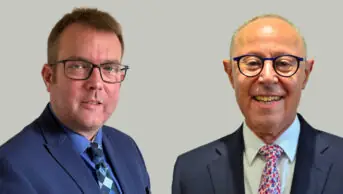Over the past couple of weeks I have settled well into my surgeries and got to grips with the IT system, SystmOne. It is great because you can create various templates to capture important patient information and handy patient infographics. This may help with assessing the impact of the role so I hope to develop some templates to monitor the effect of my clinical pharmacy work on patient outcomes.
It is a bit of a minefield getting used to new concepts such as the quality and outcomes framework (QOF), read codes (which log diagnosis, process of care and medicines to meet QOF targets) and Eclipse — a risk assessment tool which helps identify patients at risk of harm or hospital admissions. Any red flags have to be acted upon, for example, by ordering tests and booking patient reviews.
So far, I have used SystmOne to create a search to identify patients on high dose inhaled corticosteroids for review, which is one of the local priorities I need to work on.
Getting motivated for the role
Recently I attended the Centre for Pharmacy Postgraduate Education (CPPE) general practice pharmacist training pathway residential. It was a chance to meet other pharmacists on the pilot and cover important topics such as our role; consultation skills; clinical skills; how to set up a clinic; how to be resilient; and indemnity insurance (the hottest topic). There were inspirational talks from the CPPE tutors and various other speakers from NHS England and the pharmacy world. By the end of the four days I was motivated and ready to go.
Getting to know the wider team
After the residential, I found it easier to explain what I would be doing to the rest of the team. To understand the roles of the wider team, I started to shadow them to see how they run clinics. We are learning about consultation skills and models at university so it was interesting to see the various consultations styles used in practice. I intend to develop and adapt my own style but it is important to consider patient-centred care, building a rapport, listening, providing jargon-free information, and involving the patient to empower them and make decisions about their care.
My time spent with the administration team showed me how they dealt with the day-to-day appointments and prescription queries, which I was able to help answer. To understand their role, I got involved by booking patients for their blood tests and reviews. The clinical manager also showed me the end-of-month procedure for personally administered items, which is similar to the pharmacy procedure, so I picked that up quickly.
Sharing knowledge is hot on the agenda at the surgery so we have weekly clinical meetings where each of the clinicians takes it in turn to cover a topic — most recently, it was osteoporosis. Everyone is friendly and they always have the time to help me and provide contact details for leaning and shadowing opportunities. My local medicines management team and clinical commissioning group have also been a great support and provided me with surgery reports, local formularies and priorities and invitations to local events and meetings.
Peer support
There are monthly meetings with the other clinical pharmacists in my area, which I find useful because you can share learning experiences and find out what everyone else is doing. At our most recent meeting, we discussed how we deal with care homes and covered clinical topics including minor ailments and dementia. I also have the support of my clinical supervisor at CPPE, who visits to make sure we are on track with our personal development plan.
Developing the role
I have realised that this role is what I make of it and what I put in. It is a chance to work together within a multidisciplinary team to think of new ideas that make a real difference to the quality of patient care, improve safety and health outcomes.
There are many skills that pharmacists can contribute in general practice such as:
- performing patient-centred medication reviews for people with co-morbidities and polypharmacy;
- optimising medicines management of patients with chronic long-term conditions;
- streamlining medicine reconciliation and communication between hospital, GP and community pharmacy following hospital discharge to ensure patient safety;
- liaising with community pharmacy to support adherence and reduce waste;
- improving safe, evidence-based and cost-effective prescribing;
- improving access to primary care by running minor ailments, polypharmacy and care homes clinics.
Only time will tell if we can make a real difference but I believe that this is an opportunity for the pharmacy profession to shine.
You may also be interested in

‘Are people believing this information?’: research raises concerns over online drug marketing

Dale and Appelbe’s Pharmacy and Medicines Law: covering ‘essential ground in the most highly regulated areas of healthcare’
